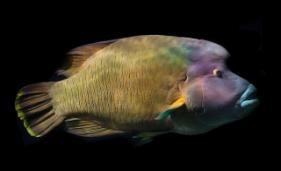Development of EU legislation to protect vulnerable deep-sea species and ecosystems by defining a new depth limit for trawl fishing
Published: 28 November 2023
New legislation in the European Union (EU) has been implemented to safeguard vulnerable deep-sea species and ecosystems by setting a depth limit for trawl fishing.
Development of EU legislation to protect vulnerable deep-sea species and ecosystems by defining a new depth limit for trawl fishing
 New legislation in the European Union (EU) has been implemented to safeguard vulnerable deep-sea species and ecosystems by setting a depth limit for trawl fishing. The University of Glasgow (UofG) conducted research on the environmental and economic consequences of deep-sea bottom fishing, revealing the negative impacts of trawling below a certain depth. This research played a crucial role in the development of Regulation (EU) 2016/2336, which prohibits bottom-trawling below 800 meters in EU waters (~932,000 km2) and in international waters around the central east Atlantic Ocean.
New legislation in the European Union (EU) has been implemented to safeguard vulnerable deep-sea species and ecosystems by setting a depth limit for trawl fishing. The University of Glasgow (UofG) conducted research on the environmental and economic consequences of deep-sea bottom fishing, revealing the negative impacts of trawling below a certain depth. This research played a crucial role in the development of Regulation (EU) 2016/2336, which prohibits bottom-trawling below 800 meters in EU waters (~932,000 km2) and in international waters around the central east Atlantic Ocean.
The research conducted by UofG shed light on the destructive nature of deep-sea bottom-trawling, where weighted nets and heavy rollers are used to drag the seabed in search of commercially valuable fish. This method harms sensitive ecosystems like coral and sponges and results in the destruction of numerous non-target fish species.
The establishment of a depth limit for trawling has long been advocated by scientists, conservation groups, and international bodies like the United Nations (UN). UofG's research provided evidence supporting the need for such a limit and influenced the policy discussions on deep-sea conservation. Despite opposition from some fishing industries and EU member states, the research findings gained recognition and influenced the negotiation of the new legislation.
The UofG research, led by Dr. David Bailey and Dr. Francis Neat, analysed catch composition data from trawl surveys conducted between 240 meters and 1,500 meters in the northeast Atlantic. The analysis revealed significant changes in catch composition, biodiversity, discarded biomass, and the ratio of sharks and rays to commercial biomass at depths between 600 and 800 meters. As trawling at greater depths resulted in increased ecological impacts and decreased commercial value, the research proposed a maximum depth limit of 600 meters for effective deep-sea fishing management.
The impact of this research was significant in shaping EU policy. On December 14, 2016, the European Parliament passed Regulation (EU) 2016/2336, which restricted bottom trawling to depths of 800 meters or higher. This compromise limit aimed to address both scientific evidence supporting a shallower 600-meter limit and opposition to any depth restriction. The legislation covers an area of 932,000 square kilometres and protects approximately 49 species of deep-sea fish, including roundnose grenadier, black scabbardfish, birdbeak dogfish, orange roughy, rabbit fish, blue ling, and anglerfish.
The implementation of the legislation led to a decline in landings of ecologically important deep-sea target species in Scottish ports, with notable decreases in catches of the endangered roundnose grenadier. The legislation's positive effects also extended to the protection of sea floor cold-water coral reef and sponge ecosystems. Prohibiting trawl fishing below 800 meters significantly increased the area of protection for these vulnerable habitats.
Following the United Kingdom's departure from the EU, the adopted legislation has been converted and preserved in UK law, binding UK fisheries to the depth limit. In addition, the Scottish Government designated a 100,000 square kilometre area in the North-East Atlantic as the West of Scotland Marine Protected Area, which extends protections against trawling below 800 meters.
First published: 28 November 2023

